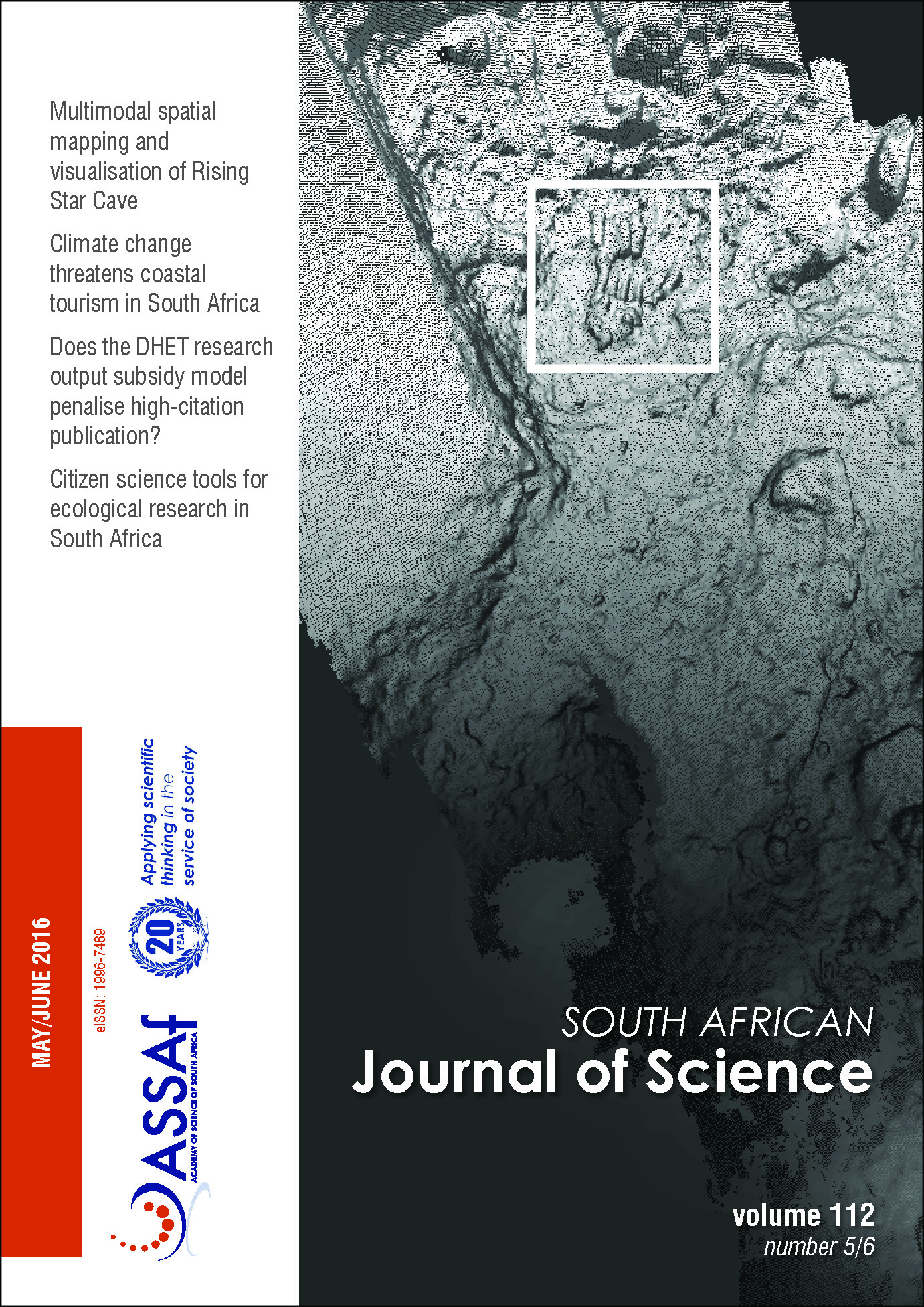DNA-based identification of aquatic invertebrates useful in the South African context?
DOI:
https://doi.org/10.17159/sajs.2016/20150444Keywords:
aquatic macroinvertebrates, DNA barcoding, eDNA, metabarcoding, biomonitoringAbstract
The concept of using specific regions of DNA to identify organisms – processes such as DNA barcoding – is not new to South African biologists. The African Centre for DNA Barcoding reports that 12 548 plant species and 1493 animal species had been barcoded in South Africa by July 2013, while the Barcode of Life Database (BOLD) contains 62 926 records for South Africa, 11 392 of which had species names (representing 4541 species). In light of this, it is surprising that aquatic macroinvertebrates of South Africa have not received much attention as potential barcoding projects thus far – barcoding of aquatic species has tended to focus on invasive species and fishes. Perusal of the BOLD records for South Africa indicates a noticeable absence of aquatic macroinvertebrates, including families used for biomonitoring strategies such as the South African Scoring System. Meanwhile, the approach of collecting specimens and isolating their DNA individually in order to identify them (as in the case of DNA barcoding), has been shifting towards making use of the DNA which organisms naturally shed into their environments (eDNA). Coupling environmental and bulk sample DNA with high-throughput sequencing technology has given rise to metabarcoding, which has the potential to characterise the whole community of organisms present in an environment. Harnessing barcoding and metabarcoding approaches with environmental DNA (eDNA) potentially offers a non-invasive means of measuring the biodiversity in an environment and has great potential for biomonitoring. Aquatic ecosystems are well suited to these approaches – but could they be useful in a South African context?
Published
Issue
Section
License

This work is licensed under a Creative Commons Attribution 4.0 International License.

All articles are published under a Creative Commons Attribution 4.0 International Licence
Copyright is retained by the authors. Readers are welcome to reproduce, share and adapt the content without permission provided the source is attributed.
Disclaimer: The publisher and editors accept no responsibility for statements made by the authors
How to Cite
- Abstract 617
- PDF 758
- EPUB 164
- XML 211












.png)